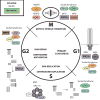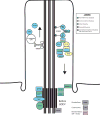Advances in Skeletal Dysplasia Genetics
- PMID: 25939055
- PMCID: PMC5507692
- DOI: 10.1146/annurev-genom-090314-045904
Advances in Skeletal Dysplasia Genetics
Abstract
Skeletal dysplasias result from disruptions in normal skeletal growth and development and are a major contributor to severe short stature. They occur in approximately 1/5,000 births, and some are lethal. Since the most recent publication of the Nosology and Classification of Genetic Skeletal Disorders, genetic causes of 56 skeletal disorders have been uncovered. This remarkable rate of discovery is largely due to the expanded use of high-throughput genomic technologies. In this review, we discuss these recent discoveries and our understanding of the molecular mechanisms behind these skeletal dysplasia phenotypes. We also cover potential therapies, unusual genetic mechanisms, and novel skeletal syndromes both with and without known genetic causes. The acceleration of skeletal dysplasia genetics is truly spectacular, and these advances hold great promise for diagnostics, risk prediction, and therapeutic design.
Keywords: ciliopathy; epigenetics; growth insufficiency; imprinting; mosaicism; primordial dwarfism.
Figures



References
-
- Al-Dosari MS, Shaheen R, Colak D, Alkuraya FS. Novel CENPJ mutation causes Seckel syndrome. J Med Genet. 2010;47:411–14. - PubMed
Publication types
MeSH terms
Substances
Grants and funding
LinkOut - more resources
Full Text Sources
Other Literature Sources

